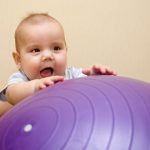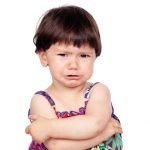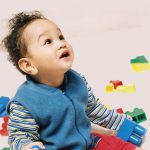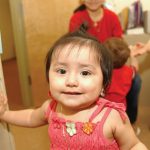The Guidelines view self-regulation as a foundation of development because children’s emerging ability or inability to self-regulate directly impacts growth in the four developmental domains. Self-regulation refers to how children take in information from both their bodies and their environment, and how they respond to that information.1
Self-regulation also refers to children’s emerging ability to regulate or control their attention, thoughts, emotions and behaviors. Since self-regulation includes how children cope with situations that produce either change or stress, children who have a difficult time managing stressors may not be able to reach a calm state where growth and learning can occur, even with the help of their caregiver. Therefore it is important that caregivers pay attention to children’s self-regulation skills and help them learn how to regulate their emotions, thoughts, and behaviors. Just as with development in other domains, children’s self-regulation capacities progress as they develop, and heavily rely on sensitive and nurturing relationships with caregivers.
Children’s capacity to self-regulate in the first three years is not fully developed. Children’s development accommodates for this maturing ability by relying on caregivers to act as the external regulators, or co-regulators.2 Central to the development of healthy self-regulation is children learning to read their bodies’ signals. At first, caregivers are the ones who respond to these signals. For example, when young children feel hunger, they must depend on their caregivers to recognize their cues and appropriately meet that need. If there is a loud noise that is causing the child to feel stressed and overwhelmed, the caregiver must modify the environment for that child to regain a calm state. Children rely on attentive caregivers to read their cues and meet their needs. Children’s needs include everything from maintaining a normal body temperature to managing their physiology and behavior, and learning to soothe themselves. As they develop children also depend on their caregivers to help them manage emotions and behavior, and build attention.3
Self-regulation is a lifelong process that depends on children’s social and cultural contexts, and the child and caregiver relationship. Cultures differ in both the physical and emotional expectations they have of young children and how they respond to children’s behaviors and signals. Therefore, how children react and what they do about feelings or occurrences will differ depending on their unique experiences.
When caregivers properly meet children’s needs in a consistent manner, they help them feel safe, content, and organized. After having these needs met over and over, children learn that feelings of stress or discomfort will quickly pass, building their internal capacity to respond to these feelings and become less reactive and impulsive. As young children learn to read and respond appropriately to their own cues, they become capable of managing their own self-regulatory processes. “This transition from external regulation to self-regulation is one of the most important tasks of growing up.”4 In the following sub-sections, the four types of self-regulation are further explained. Additionally, the concepts of self-regulation are integrated throughout the Guidelines.
Notes
- Perry, Bruce. (2012). Self-Regulation: The Second Core Strength. Early Childhood Today.
- Florez, Ida R. (2010). Developing Young Children’s Self-regulation through Everyday Experiences. National Association for the Education of Young Children.
- Shonkoff, J. & Phillips, D. (Eds.). (2000). From neurons to neighborhoods: The science of early childhood development. Washington, D.C.: National Academy Press.
- Perry, Bruce. (2012). Self-Regulation: The Second Core Strength. Early Childhood Today.


 Printer-friendly PDF
Printer-friendly PDF



 PDF para imprimir
PDF para imprimir